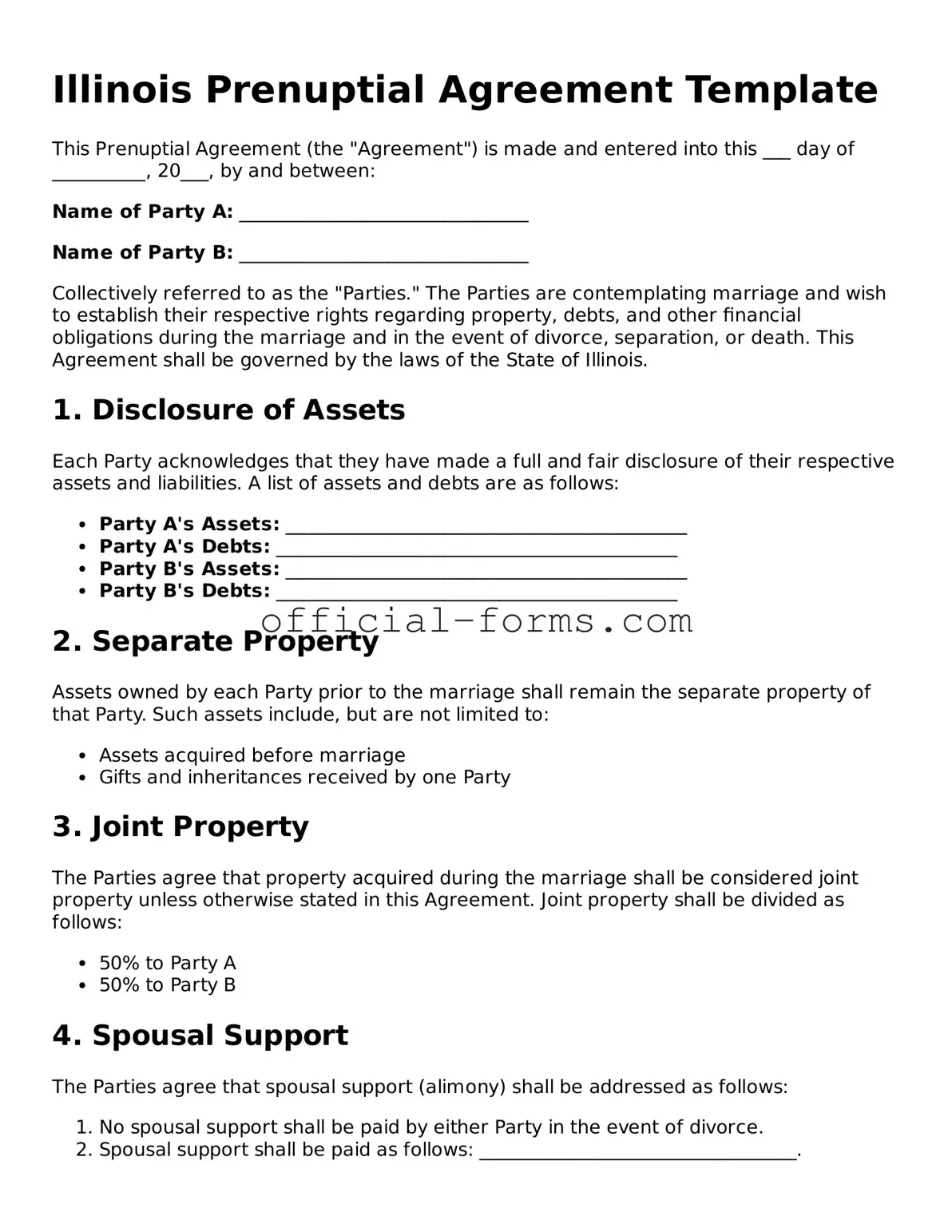Filling out a prenuptial agreement form in Illinois is a significant step for couples planning to marry. However, many individuals make common mistakes that can lead to complications in the future. Awareness of these pitfalls can help ensure that the agreement serves its intended purpose.
One frequent mistake is failing to fully disclose assets and liabilities. Both parties should provide a comprehensive overview of their financial situations. Omitting this information can lead to disputes and may even render the agreement unenforceable in court. Transparency is crucial for a valid prenuptial agreement.
Another common error involves using vague language. Clarity is essential when drafting a prenuptial agreement. Ambiguous terms can create confusion and may lead to different interpretations later. It is important to define all terms clearly and explicitly to avoid potential legal challenges.
Many couples also neglect to consider future changes in circumstances. Life events such as career changes, children, or significant financial shifts can impact the agreement. It is wise to include provisions that address how the agreement will adapt to these changes over time.
Additionally, individuals often overlook the importance of legal representation. Each party should ideally have their own attorney to review the agreement. This ensures that both parties understand their rights and obligations. Relying solely on one lawyer can create conflicts of interest and may leave one party at a disadvantage.
People also frequently underestimate the significance of timing. Signing the prenuptial agreement too close to the wedding date can raise questions about coercion or pressure. It is advisable to initiate discussions and finalize the agreement well in advance of the wedding to ensure that both parties feel comfortable and informed.
Another mistake is failing to comply with state laws regarding prenuptial agreements. Each state has specific requirements, and Illinois is no exception. Not adhering to these legal standards can lead to the agreement being deemed invalid. Familiarity with state laws is essential for creating a legally binding document.
Lastly, couples often forget to revisit and update the agreement periodically. As life evolves, so do financial situations and personal circumstances. Regularly reviewing and updating the prenuptial agreement can help ensure it remains relevant and effective throughout the marriage.
